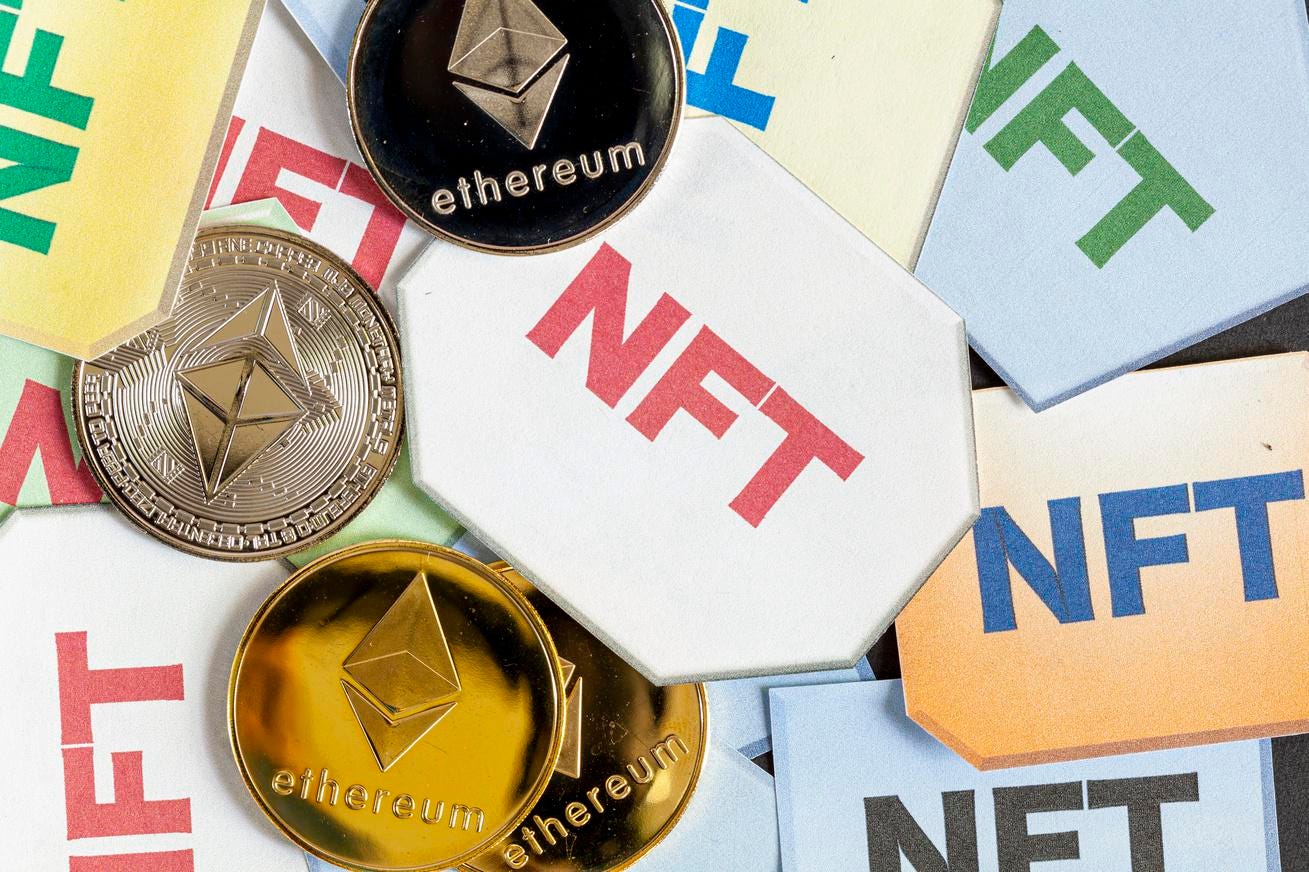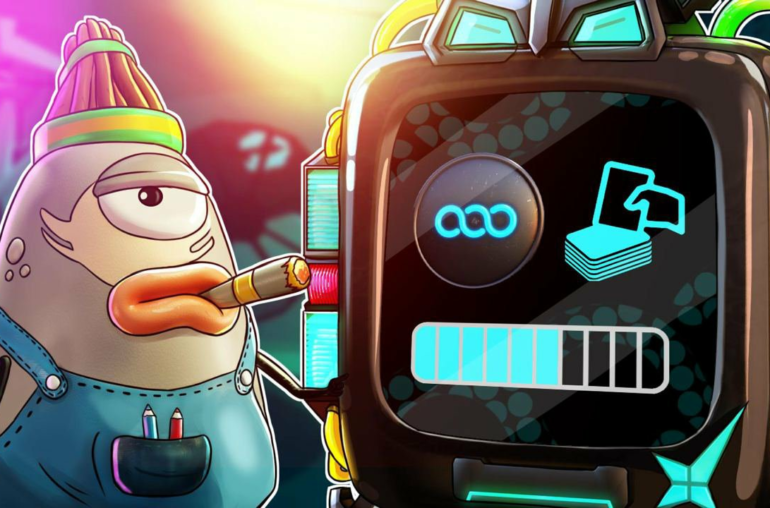NFT holder may receive duplicates that are not only less valuable, but also dilute the worth of the original assets
Leading smart contract platform Ethereum underwent its biggest upgrade yet, as The Merge was successfully executed on the morning of September 15th. Often analogized as “changing the engine of an airplane mid-flight”, the platform switched out its energy-intensive proof-of-work consensus mechanism for an environmentally-friendly proof-of-stake alternative.
Although this transition will not immediately impact Ethereum’s performance, it is a necessary first step towards subsequent upgrades that will improve its throughput and efficiency. Once these stages are complete, Ethereum will be capable of handling thousands of complex platforms and applications that utilize NFTs.
However, that does not mean that NFT holders, especially those that are based on Ethereum, do not have important decisions to make today. For instance, a widely anticipated Ethereum fork, i.e. a derivative that is sticking with proof-of-work, could lead to NFT holders holding duplicates that have wildly different values. In addition, NFT prices have declined in the days since The Merge as part of an overall market selloff.
Ethereum is the dominant home of NFT activity and trading, making up 76% of all NFT volume. This is followed by Axie Infinity’s sidechain Ronin with 11% share of trading volume, Solana with 7%, Flow with 3%, and Polygon with 1%. The successful Merge, along with subsequent updates planned in the coming months and years dubbed Surge, Verge, Purge, and Splurge, should help the network protect its head start against competitors that offer cheaper and faster transactions.
However, that does not mean that The Merge did not leave loose ends. Upset by the upgrade cutting them out of the network, a group of Ethereum miners have banded together and launched a forked version of the Ethereum chain that retains proof-of-work, the new chain being called EthereumPoW (ETHW). For NFT holders this means that they may now own duplicates of their assets, but their value will depend on the level of exchange support and overall adoption of this forked network.
The largest NFT marketplace, OpenSea, announced that it would only support NFTs on the upgraded Ethereum PoS chain. Similarly, creators of the Bored Ape Yacht Club collection, Yuga Labs, announced that they intend to only recognize licensing and copyright of the collection for owners of the NFTs on the upgraded PoS chain.
On the contrary, competing NFT marketplace Rarible took the opposite stance. Rarible stated it will recognize any copies of NFTs resulting from a fork created in the same wallet address when they were held on Ethereum. Duplicate NFTs may also cause confusion, opening the door to new scams and rug pulls, in a space already rife with bad actors and malicious activity. More companies and projects are expected to make similar decisions as the fate of the ETHPoW fork becomes clearer in the coming days.
While there is no data yet about the value of ETHPoW NFTs, ETHPoW’s roller coaster in recent days indicates that its NFTs will be worth considerably less than their mainstream counterparts.
Since its launch on September 15, ETHPoW reached an all-time high of $60, or roughly 4% of ETH’s total network value, before quickly dropping in value 82% to $11, where it trades today. This trend indicates that Ethereum holders that were rewarded the ETHPoW airdrop have been dumping their airdropped tokens as exchanges began listing the token and added liquidity.
ETHPoW has been dropping since the network launched
Assuming this trend continues and EthereumPoS emerges as the winning canonical Ethereum chain, we may see similar dynamics amongst duplicate NFTs that now live on the EthereumPoW chain. This would lead to significant discounts in the value of NFTs on ETHPoW compared to their EthereumPoS counterparts.
“The Merge could disrupt many NFT projects that are not ready for the change and are not anti-fragile. Some projects will face problems due to technical issues, and we may face a large influx of scammers. There will probably be more Ethereum forks, which could create confusion and lead to scams as duplicate NFTs enter the system. As a result of the confusion, NFT holders could lose the original version of their NFTs if they are not careful,” said Alex Obchakevich, Co-Founder of Misfits DAO.
One other important implication of The Merge, and the elimination of its carbon footprint, is that it could open the door for ESG-conscious developers and investors to enter Ethereum’s NFT industry.
That being said, Proof of Stake is still untested in such a large network. It remains to be seen if the network can maintain decentralization and avoid institutional value capture over time in which large entities participate in staking and gain a larger ownership share and control of the network. There are already concerns that two entities, crypto exchange Coinbase and staking platform Lido, control almost 40% of the total staking power of the network. Furthermore, SEC Chair Gary Gensler hinted this week that Ethereum’s switch to proof-of-stake could move it closer to being a security in the eyes of the regulator.
It is also important to reiterate that the Merge has not affected scalability or transactional throughput, meaning transaction fees for sending and trading NFTs are unchanged and may still remain high depending on gas usage and demand. During periods of high activity, gas fees for NFT transactions could reach into the hundreds of dollars, pricing out many users and encouraging them to adopt second layer chains such as Polygon and Arbitrum or competing layer-one chains such as Solana, Flow, Tezos, and Avalanche.
Low transaction fees are important as high fees price out many NFT use cases, especially in the gaming and metaverse space. Many NFT gaming weapons, avatars, and skins will likely trade at relatively low values, which necessitate faster transaction speeds and lower costs to be economically viable.
In order to bring transaction fees down and increase scalability meaningfully, users will need to wait for the Surge, Verge, Purge, and Splurge upgrades.
Much also remains undecided about how or if intellectual property rights will transfer to NFT duplicates on forked versions of Ethereum. Most NFT creators will likely only grant rights to holders of NFTs on the most widely adopted post-fork chain, likely to be EthereumPoS.
Ultimately, the answer may be determined by the collection creators, evidenced by Yuga Labs declaring they would only acknowledge IP rights for NFT holders on the canonical EthereumPoS chain. In this case, new buyers must beware which version of the NFT they are purchasing, as they may think they are the owner of the asset, but instead discover they do not have a claim to any of the associated rights.
If major players in the NFT ecosystem recognize the legitimacy of both the PoS and PoW chains, the forked EthereumPoW chain may dilute the value of existing NFT collections due to the increase in supply. This would also create a messy situation around IP and commercial rights, potentially leading to major disputes between NFT owners. Ultimately, the market will legitimize which NFT assets are valuable based on liquidity and acceptance by the broader community.
Investors betting on the ESG narrative serving as a strong catalyst for capital allocation amongst institutional investors may view the Ethereum ecosystem as a major beneficiary of the ESG movement. This would support the price of Ether, but also would indirectly support the value of top NFT collections built on top of the network. The winning smart contract platform will attract the most talent and capital, bolstering the entire NFT ecosystem native to that chain.
It may be prudent for investors and traders to wait until the dust settles before making any decisions for their Ether and NFT assets. This can take several days or weeks or fully play out. Additionally, investors should follow the guidance given by the marketplaces, wallets, and other service providers they regularly engage with to see which chains and assets they will support.



